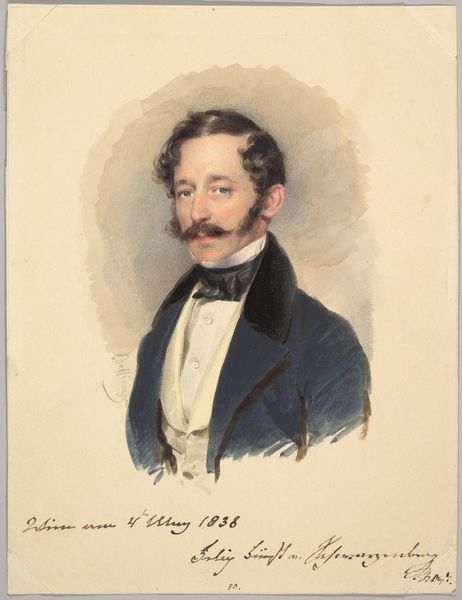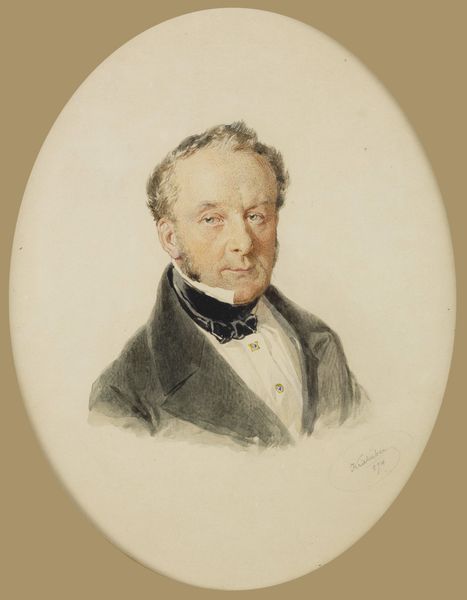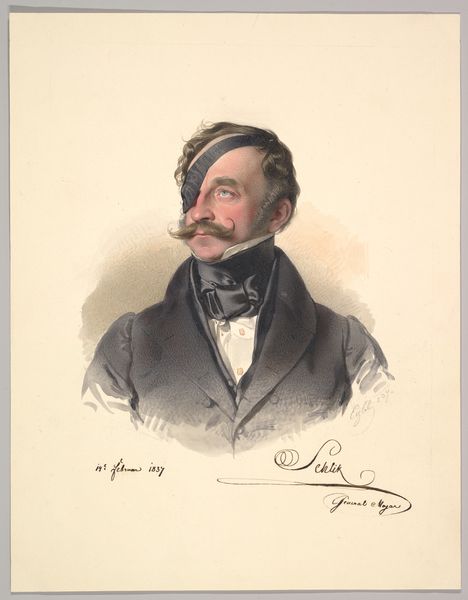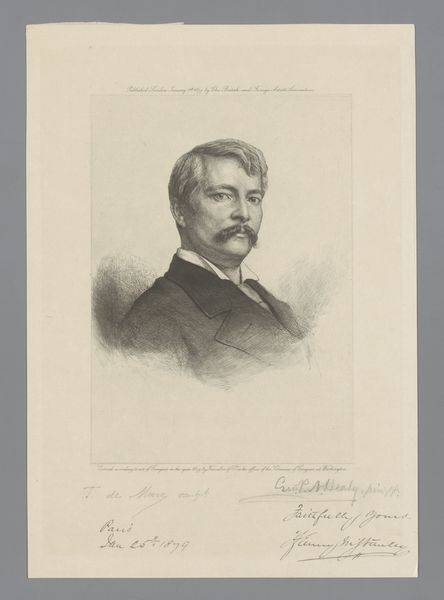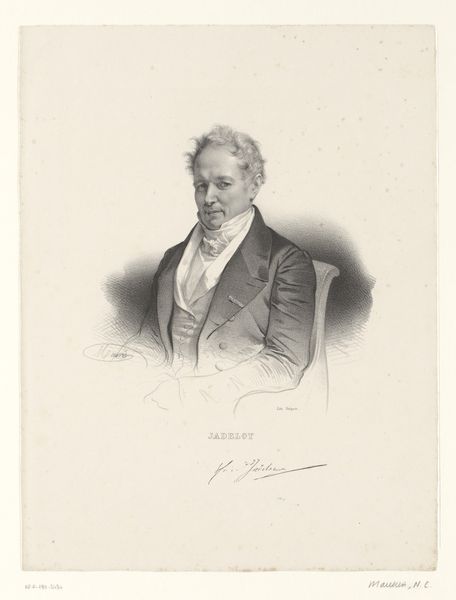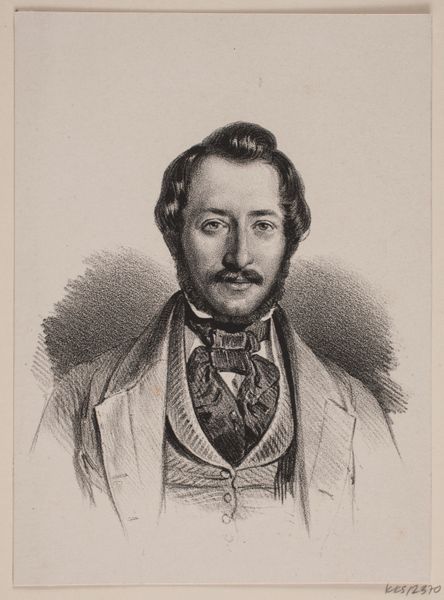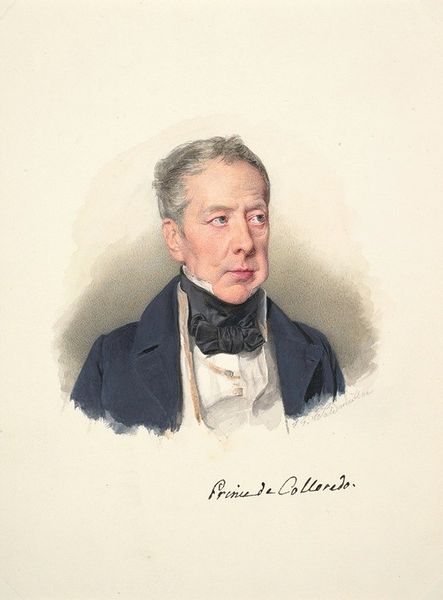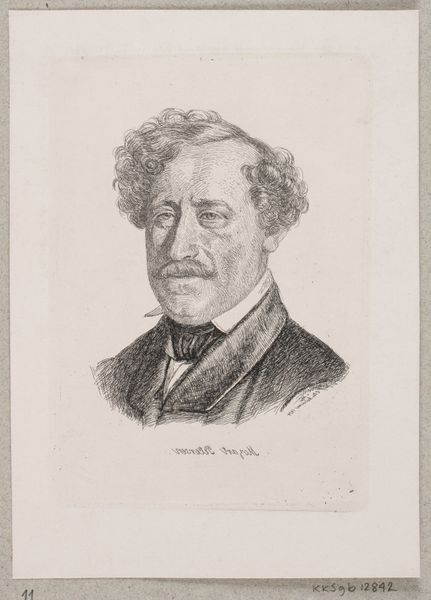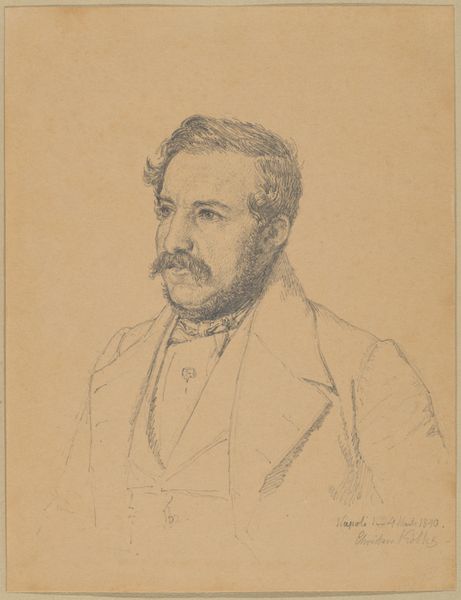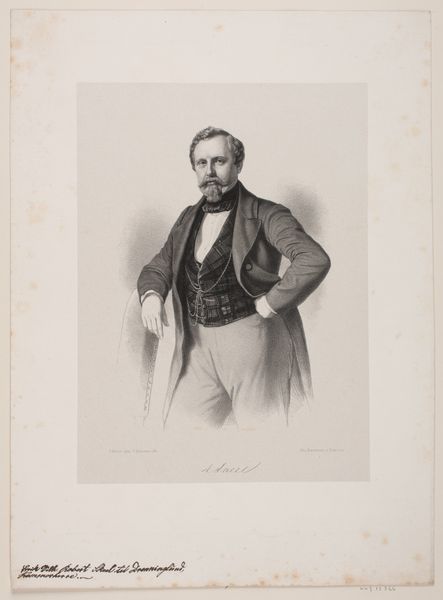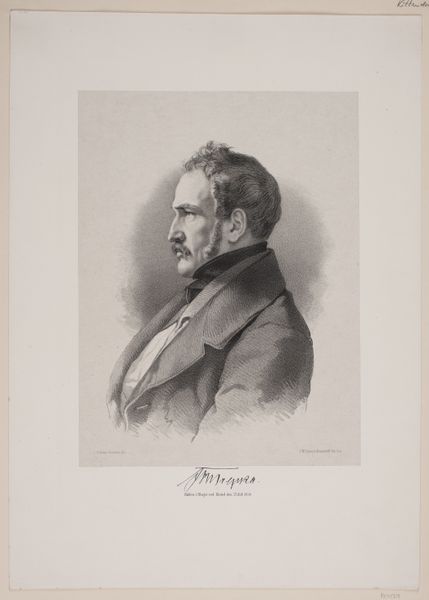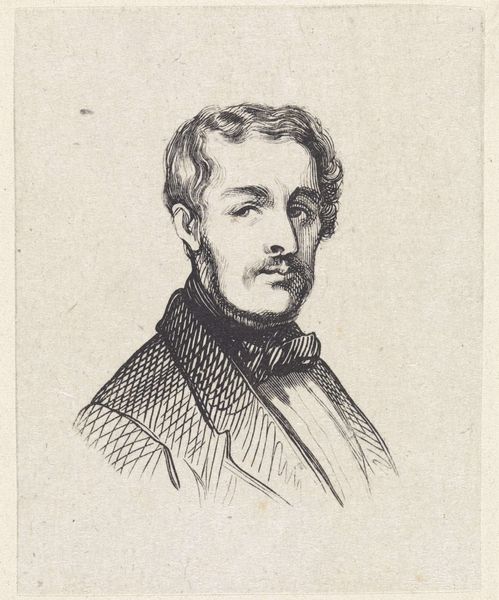
drawing, watercolor, ink
#
portrait
#
drawing
#
caricature
#
watercolor
#
ink
#
romanticism
#
portrait drawing
#
portrait art
Copyright: Public domain
Josef Kriehuber created this portrait of Count Georg Esterházy Von Galántha in 1846 using lithography and watercolor. Lithography, a printmaking technique, relies on the simple principle that oil and water don't mix. The artist draws on a flat stone or metal plate with a greasy substance, then applies water, which adheres only to the non-greasy areas. Ink is then applied, sticking only to the greasy drawing, allowing for a print to be made. The Count’s features and clothing were likely first captured through lithography, with the subtle washes of watercolor added afterward to bring warmth to his face, and depth to his jacket. The lithographic process allowed Kriehuber to reproduce the image multiple times, catering to the growing demand for portraiture among the rising middle class. In this context, lithography democratized image-making, making portraits accessible beyond the aristocracy. By understanding the materials, making, and context of this portrait, we gain insight into the convergence of art, technology, and social change in 19th-century Europe.
Comments
No comments
Be the first to comment and join the conversation on the ultimate creative platform.
